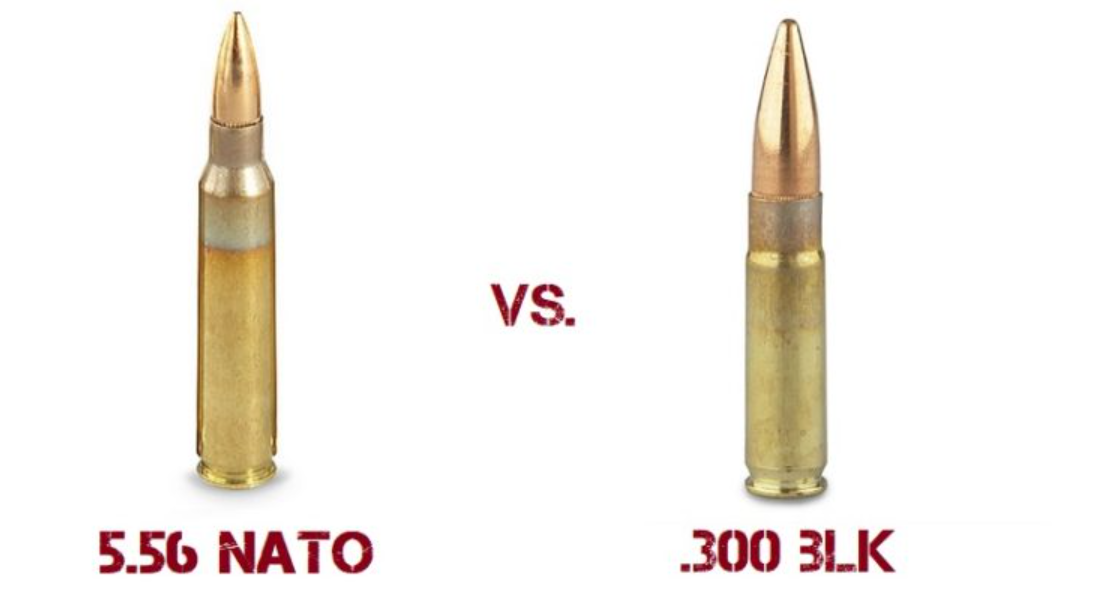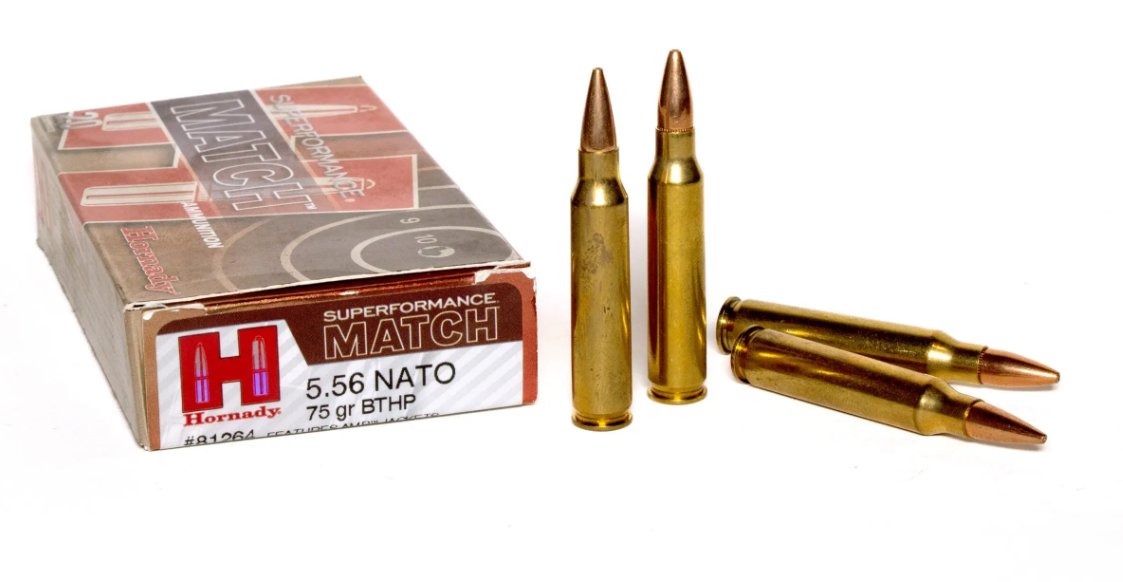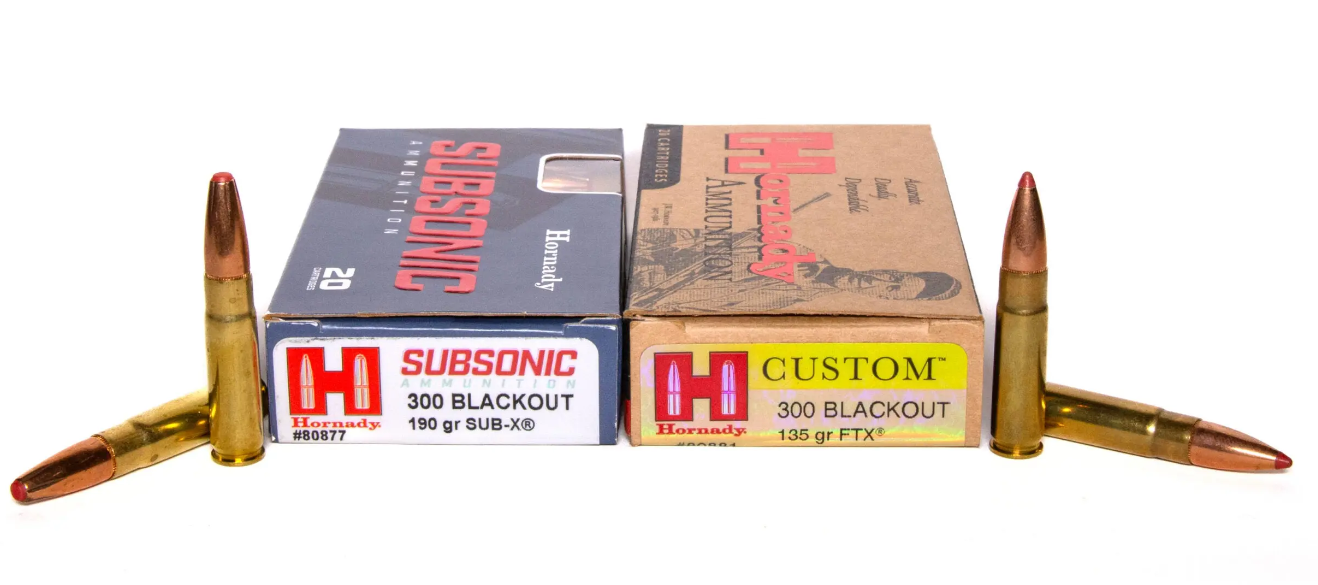Informational
300 blackout vs 556 Ammunition :High Precision Ammo
Comparing 300 blackout vs 5.56 ammo
When it comes to choosing between the 300 Blackout vs 556 NATO, enthusiasts and professionals often find themselves in a debate. Each cartridge has unique attributes that cater to different use cases, whether it’s for military, hunting, or home defense. This article dives deep into their origins, technical specifications, and real-world applications, providing you with the knowledge to make an informed choice.

Historical Background for Comparing 300 blackout vs 556 ammo
The U.S. military and NATO forces adopted the 5.56 NATO in the 1960s, primarily for military use. Its lightweight design lets soldiers carry more rounds, making it an ideal choice for combat. Its lightweight design allows soldiers to carry more rounds, making it an optimal choice for battle.

On the other hand, Advanced Armament Corporation (AAC) developed the 300 Blackout more recently, and the Sporting Arms and Ammunition Manufacturers’ Institute (SAAMI) approved it in 2011. It was specifically designed for AR-15 rifles, delivering superior performance in close-quarters combat and excelling when used with suppressors.

Key Specifications and Characteristics
- Bullet Diameter: The 5.56 NATO uses a .224-inch bullet, while the 300 Blackout uses a .308-inch bullet, giving it a heavier profile.
- Bullet Weight: The 300 Blackout typically uses bullets ranging from 110 to 220 grains, compared to the 55 to 77 grains found in most 5.56 rounds.
- Velocity: The 5.56 NATO is known for its high velocity, usually exceeding 3,000 feet per second, contributing to its effective range. The 300 Blackout, on the other hand, travels slower but hits harder due to its larger bullet size.
Use Cases for 300 Blackout vs 556
- Military: The 5.56 NATO is widely used in military rifles like the M16 and M4 because of its flat trajectory and effective range. The 300 Blackout, however, shines in close-quarters combat due to its subsonic performance when suppressed.
- Civilian Usage: Civilians use cartridges for hunting, target shooting, and home defense. The 300 Blackout’s stopping power makes it effective for hunting medium-sized game, while the 5.56 is ideal for small game and varmint hunting.
Ballistics Performance Comparison
The 300 Blackout delivers superior stopping power regarding short-range performance due to its larger bullet size. This makes it particularly effective at shorter distances, especially in urban or forested environments where long-range shots are unnecessary.
The 5.56 NATO excels for long-range performance due to its higher velocity and flatter trajectory, making it a better choice for engagements beyond 300 yards.
Recoil and Shooting Experience
The recoil of the 300 Blackout is more pronounced compared to the 5.56, although still manageable for most shooters. The 5.56’s lighter recoil allows faster follow-up shots, making it more suitable for rapid engagements or shooting sports.
Suppressor Compatibility
One of the main selling points of the 300 Blackout is its compatibility with suppressors. When using subsonic ammunition, the 300 Blackout performs exceptionally well suppressed, reducing noise significantly. The 5.56, by contrast, faces challenges when suppressed, as the supersonic rounds produce a distinct crack.
300 Blackout
Engineered with suppression in mind, the 300 Blackout performs exceptionally well with subsonic ammunition. When paired with a suppressor, it achieves remarkable noise reduction, making it a favorite for stealthy operations and home defense.
5.56 NATO
While suppressors can be used with the 5.56 NATO, the cartridge’s supersonic rounds generate a distinctive crack that limits overall noise reduction.
Ammunition Availability and Cost
300 Blackout ammunition tends to be more expensive and less widely available than 5.56 rounds, which are mass-produced for military and civilian markets. This cost difference is something to consider when stocking up on ammo.
Weapon Platform Compatibility
Both cartridges are designed to work with the AR-15 platform but are not interchangeable. Switching between the two requires different barrels. The 300 Blackout is designed to work with standard AR-15 magazines without losing capacity, while the 5.56 remains the standard for most AR-15-style rifles.
Weapon Platform Compatibility
Both cartridges are designed for the AR-15 platform, but there are key differences to note:
300 Blackout
- Requires a different barrel but can use the same lower receiver and magazines.
- Offers the added benefit of not reducing magazine capacity.
5.56 NATO
- Remains the standard cartridge for most AR-15 rifles.
- Does not require additional modifications, making it more accessible to new AR-15 owners.
Practical Considerations: Choosing the Right Cartridge
When deciding between 300 Blackout and 5.56 NATO, consider the following:
- Intended Use: Are you hunting, defending your home, or engaging in long-range shooting?
- Budget: Do you have the resources for the higher cost of 300 Blackout ammo?
- Shooting Environment: Will you primarily operate in short-range or long-range settings?
Both 300 Blackout and 5.56 NATO have their merits, and the best choice depends on your specific needs. The 300 Blackout excels in close-quarters combat, hunting, and suppressed shooting. Meanwhile, the 5.56 NATO offers unparalleled performance for long-range engagements and cost-effective training. By understanding their strengths and limitations, you can select the cartridge that aligns perfectly with your goals.
FAQs About 300 Blackout vs 5.56
1. What is the primary difference between 300 Blackout vs 556?
The main difference between the 300 Blackout and 5.56 NATO is the bullet size and intended use. The 300 Blackout uses a heavier .308-inch bullet designed for short to mid-range engagements, especially in suppressed firearms. In contrast, the 5.56 NATO uses a smaller, high-velocity .224-inch bullet, optimal for longer-range engagements and rapid follow-up shots.
2. Which cartridge is better for hunting?
For hunting, the 300 Blackout is typically better for medium to large game due to its superior stopping power and heavier bullet. The 5.56, on the other hand, is more suited for small game or varmint hunting because of its flatter trajectory and longer-range capabilities.
3. Is 300 Blackouts more expensive than 5.56?
Generally, 300 Blackout ammunition is more expensive and less widely available than 5.56. The 5.56 is mass-produced for military and civilian use, making it cheaper and more accessible.
4. Can I use the same rifle for 300 Blackout and 5.56?
No, you cannot use the same barrel for both cartridges. While 300 Blackout and 5.56 can be used in AR-15 platforms, they require different barrels. However, both can use the same lower receiver and magazines, with 300 Blackout having the added benefit of not reducing magazine capacity.
5. Which is better for home defense: 300 Blackout or 5.56?
The 300 Blackout tends to be favored for home defense due to its ability to function well with suppressors and its heavier bullet, which reduces the risk of over-penetration compared to 5.56. The 5.56, though faster, has a greater chance of penetrating walls and causing unintended damage in a home defense scenario.
6. Is the 300 Blackout effective at long range?
While the 300 Blackout can perform decently at mid-range (up to 300 yards), it is less effective than the 5.56 for long-range engagements. The 5.56, with its higher velocity and flatter trajectory, is superior for shooting at longer distances beyond 300 yards.
